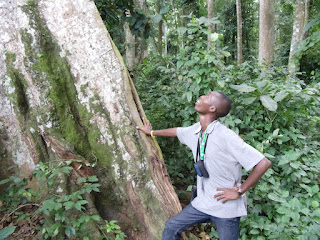Report on Raise the Green Wall program held at Abeokuta Girls’ Grammar School, Abeokuta, Nigeria
Project
Title: “Raise the Green Wall”
In the view of
the global move towards the sustenance of the future of our planet from the
ravaging impact of climate change, there has been a tremendous build-up of activism portraying various levels of action all around the world and In a
great deal of way the youths have been practically the solid backbone of these
moves.
Raise the green
wall represents one of the many projects of Green Impact International and it
is an adapted program set to help educate and ignite the passion of youths towards
ensuring their relative contributions as regards engaging in actions directed
at protecting the future of our environment from the impact of climate change
Focus points
·
Climate smart orientation
·
Ecological footprint calculation
·
One student, one tree
The program was
recently staged at Abeokuta Girls’ Grammar school, Abeokuta, Ogun State Nigeria
with a total out of 80 students. The program was however divided into three
sessions to allow for proper orientation:
assessment session: This session
involved a survey exercise which was directed at assessing the prior knowledge
of the students as regards their common perception on climate change. The
following results were collated from the assessment:
1. Considering
the level of localized perception of changes as observed in the fluctuating
weather pattern, 98% of the respondents affirmed the notion of having noted a
level of fluctuation in local weather pattern while just 2% responded
otherwise. (Figure1)
 |
| Figure 1 |
2.
A rather balanced percentage of responses were obtained in the view of
elements to attribute the changes to. 50% responded on the side of natural
pattern as the cause factor while the other 50% sided with Human activities as
the main problem. (Figure 2)
 |
| Figure 2 |
3. Every respondent agreed to the fact that the
changes have had some effect on their surrounding environment, productivity and
lifestyle. (Figure 3)
 |
| Figure 3 |
4. The largest percentage of respondents have had
the changes impacted their health overtime, while 14% responded to the impact
as non-availability of food and 7% distinguished the impact as a livelihood
support problem. (Figure 4)
 |
| Figure 4 |
5. 75% responded to personal efforts as the
measures they have adopted to adjusting to the changes, 18% of the respondents
have received some level of interventions from the government while just 7%
were not certain they had received or adopted any means to adjusting to the
changes. However, communal effort was largely missing from the familiar
measures. (Figure 5)
 |
| Figure 5 |
6. In
assessing the respondents’ opinion on the best practice towards solving climate
change, 68% sided with governmental interventions, 25% with personal efforts,
3% went for communal efforts, 2% however agreed that all the options should be
considered and 2% of the respondents responded as not concerned.(Figure 6)
 |
| Figure 6 |
Conclusion
The last session was the planting
out part where every student had the opportunity of adopting and planting a tree
on the already prepared field. We had a total of 80 trees planted to conclude
the one day event.
More insightful details can be
gleaned from the video recording of the event.
https://youtu.be/921G9nBUgrU
https://youtu.be/921G9nBUgrU






Comments
Post a Comment